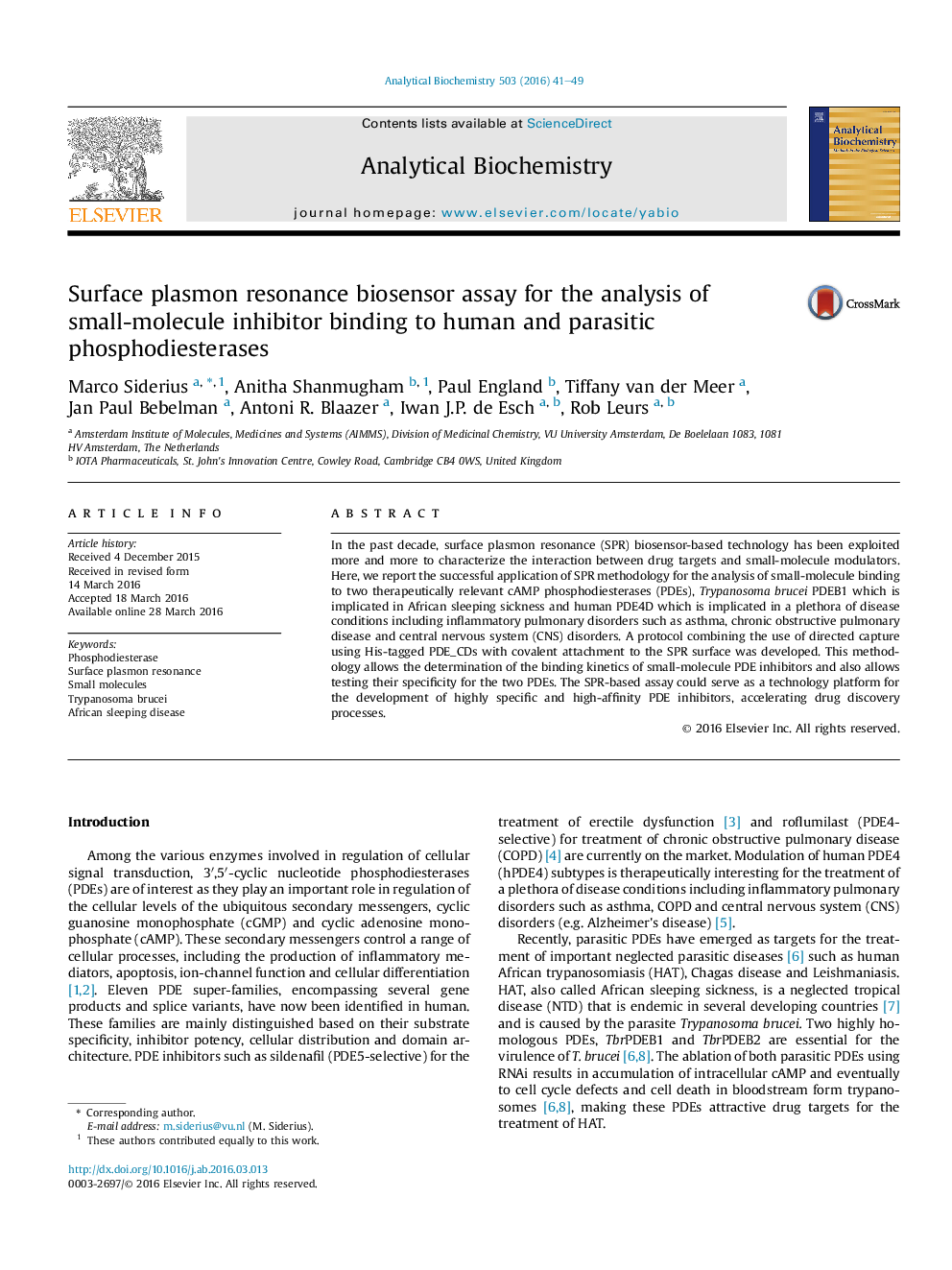| Article ID | Journal | Published Year | Pages | File Type |
|---|---|---|---|---|
| 7557566 | Analytical Biochemistry | 2016 | 9 Pages |
Abstract
In the past decade, surface plasmon resonance (SPR) biosensor-based technology has been exploited more and more to characterize the interaction between drug targets and small-molecule modulators. Here, we report the successful application of SPR methodology for the analysis of small-molecule binding to two therapeutically relevant cAMP phosphodiesterases (PDEs), Trypanosoma brucei PDEB1 which is implicated in African sleeping sickness and human PDE4D which is implicated in a plethora of disease conditions including inflammatory pulmonary disorders such as asthma, chronic obstructive pulmonary disease and central nervous system (CNS) disorders. A protocol combining the use of directed capture using His-tagged PDE_CDs with covalent attachment to the SPR surface was developed. This methodology allows the determination of the binding kinetics of small-molecule PDE inhibitors and also allows testing their specificity for the two PDEs. The SPR-based assay could serve as a technology platform for the development of highly specific and high-affinity PDE inhibitors, accelerating drug discovery processes.
Related Topics
Physical Sciences and Engineering
Chemistry
Analytical Chemistry
Authors
Marco Siderius, Anitha Shanmugham, Paul England, Tiffany van der Meer, Jan Paul Bebelman, Antoni R. Blaazer, Iwan J.P. de Esch, Rob Leurs,
